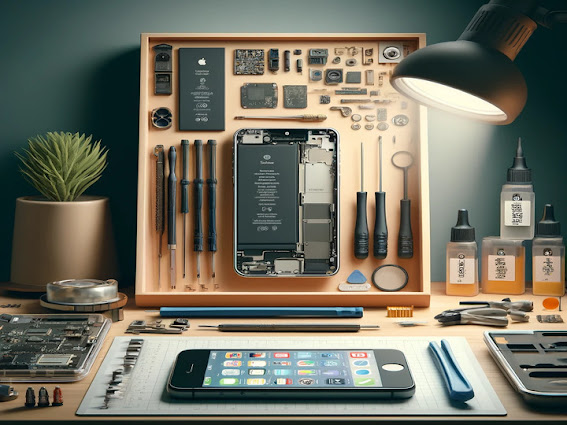Guide To Cracked Screens And iPhone Replacement Screens Solutions
Many users share their frustration with cracked iPhone replacement screens. Beyond the aesthetic displeasure, cracked iPhone screens can lead to functional issues and compromise the overall user experience.
The comprehensive guide below aims to provide a one-stop solution for conquering cracked screens and other common iPhone woes using cell phone replacement parts.
We'll explore the causes of screen damage, common signs indicating the need for a replacement, preventive measures to avoid future damage, and whether a repair or replacement is the best option.
Common Causes of Screen Damage
Accidental drops and impacts are the primary culprits behind iPhone screen damage. Whether it's a minor fall or a more substantial impact, the result can be cracked glass or screen shattering.
Screen damage can also be caused by exposure to extreme temperatures, pressure on the screen, or contact with sharp objects. These factors affect the device's appearance and can impact its functionality and longevity.
The impact of a cracked screen on user experience and device functionality cannot be understated. It can hinder touch sensitivity, challenging the ability to navigate apps or perform tasks efficiently.
Moreover, prolonged use with a cracked screen can exacerbate the damage, leading to further complications and potential risks to the internal components.
Signs Your iPhone Screen Needs A Replacement
Recognizing when your iPhone screen needs a replacement is crucial for maintaining optimal functionality and user experience. Here are the top common signs that indicate your iPhone screen requires replacement:
Unresponsive touchscreen
An unresponsive touchscreen is a clear indication that your iPhone screen needs attention. If taps, swipes, or gestures are not registering accurately or require excessive pressure, it suggests underlying screen damage that may necessitate a replacement.
Severe cracks
Visible cracks, shattered glass, or extensive damage to the screen surface are unmistakable signs that your iPhone screen needs immediate replacement. Severe cracks compromise the device's aesthetics and pose risks to its functionality.
Screen Flickering
Suppose you notice frequent flickering or flashing of the screen, especially during usage or when adjusting brightness settings. It indicates potential display issues that require professional assessment and likely screen replacement.
Dead Pixels
Dead pixels are pixel spots on the screen that remain unlit, appearing as tiny black dots. They can result from screen damage or internal display problems; replacing the screen is often necessary to resolve such issues.
Discolored screen
An iPhone screen displaying abnormal colors, such as pink, green, or distorted hues, suggests a damaged display panel that needs replacement for optimal performance and accurate color reproduction.
Lines on the screen
Vertical or horizontal lines running across the screen, especially if they appear suddenly or increase over time, indicate screen damage that may affect the overall visual experience and require a replacement to resolve.
Top Tips For Preventing Future Damage
Preventing future damage to your iPhone screen is essential for maintaining its longevity and optimal performance. Here are some practical tips to help you protect your device:
Using protective cases and screen protectors
Investing in high-quality wholesale Mobile Accessories like protective cases and reliable screen protectors can significantly reduce the risk of screen damage from drops, scratches, and impacts.
Being cautious during handling and usage
Handle your iPhone carefully, avoiding situations where it may be dropped or subjected to excessive pressure. Also, avoid placing heavy objects on the device or carrying them in overcrowded pockets or bags.
Regular device maintenance and inspections
Perform routine checks of your iPhone for any signs of damage, such as cracks, scratches, or screen abnormalities. Promptly address any issues to prevent them from worsening over time.
Avoiding unauthorized modifications
Avoid DIY repairs or unauthorized modifications that can void your warranty and potentially cause further damage to your device. Always seek professional assistance for repairs and replacements to ensure optimal results.
Do You Need A Repair Or A Replacement?
When faced with iPhone screen damage, determining whether a repair or replacement is necessary depends on the extent and severity of the damage.
Minor issues like small cracks or dead pixels may be resolved through screen repair, in which only the damaged components are replaced with wholesale Mobile parts.
However, severe damage, extensive cracks, or multiple issues may necessitate a complete screen replacement for optimal performance and longevity.
In conclusion, protecting your iPhone from cracked screens and addressing screen damage are crucial to maintaining a seamless user experience.
By understanding the causes of screen damage, recognizing common signs indicating the need for cell phone replacement parts, implementing preventive measures, and making informed decisions regarding repairs or replacements, you can effectively protect and prolong the life of your iPhone.


Comments
Post a Comment